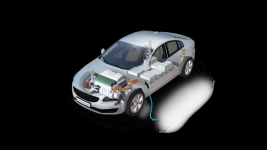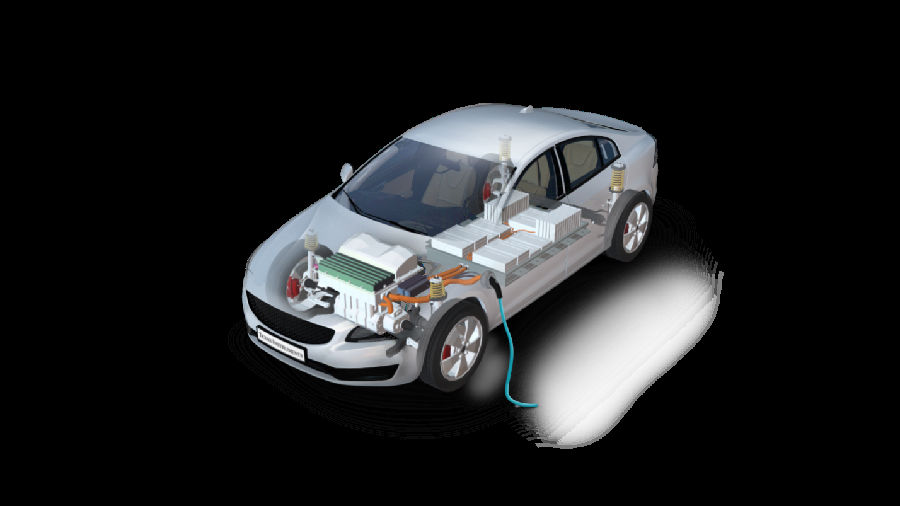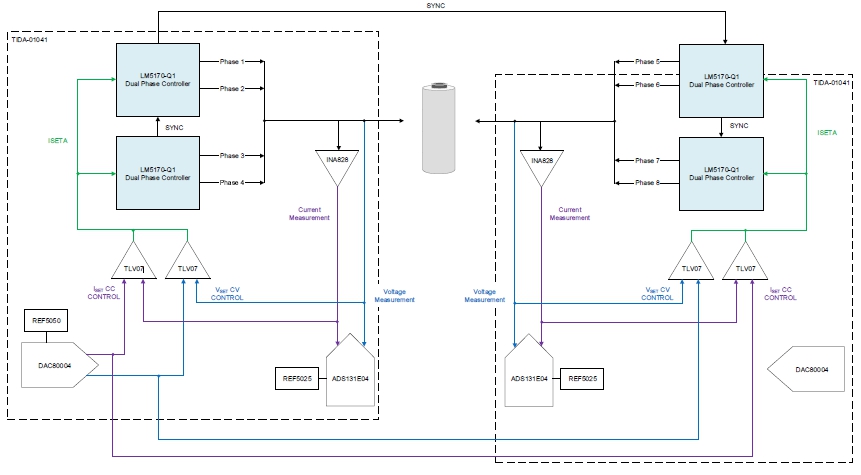
Creating cost-effective and versatile Li-Ion battery testing solutions
“As lithium-ion batteries are increasingly used in areas such as drones, electric vehicles (EVs) and solar energy storage, battery manufacturers are also leveraging modern technologies and chemistries to push the limits of battery testing and manufacturing capabilities.
“
As lithium-ion batteries are increasingly used in areas such as drones, electric vehicles (EVs) and solar energy storage, battery manufacturers are also leveraging modern technologies and chemistries to push the limits of battery testing and manufacturing capabilities.

Figure 1: Batteries Powering Modern Electric Vehicles
Today, every battery, regardless of size, performance and lifespan is determined during the manufacturing process, and test equipment is designed for that specific battery. However, because the lithium-ion battery market covers all shapes and capacities, it is difficult to create a single, integrated tester that can handle different capacities, currents and physical shapes with the required accuracy and precision.
Given the increasing diversity of demand for Li-ion batteries, there is an urgent need for high-performance, flexible test solutions that maximize trade-offs and achieve cost-effectiveness.
Lithium-ion batteries are complex and diverse
Today, lithium-ion batteries come in a variety of sizes, voltages, and applications that were not realized when the technology first hit the market. Lithium-ion batteries were originally designed for use in relatively small devices such as laptops, cell phones, and other portable Electronic devices. Now, they come in much larger form factors, such as electric vehicles and solar battery storage. This means that larger series-parallel battery packs have higher voltages and larger capacities, as well as being physically larger. For example, some EV battery packs can be configured with as many as 100 in series and more than 50 in parallel.
Stacking batteries is nothing new, the typical rechargeable lithium-ion battery pack in a regular laptop consists of multiple cells in series, but testing is made more complicated by the bulk of the battery pack and can affect overall performance. For optimal performance of the entire battery pack, each cell must be nearly identical to its neighbors. Batteries affect each other, so if one cell in a series has a lower capacity, the other cells in the pack will all be suboptimal as their capacity is downgraded by the battery monitoring and rebalancing system to match the lowest performance ‘s battery. As the saying goes, a mouse poop ruins a pot of porridge.
The charge-discharge cycles further illustrate how a single cell degrades the performance of the entire battery pack. The cell with the lowest capacity in the pack will reduce its state of charge the fastest, resulting in an unsafe voltage level that can no longer discharge the entire pack. When the battery pack is charging, the battery with the lowest capacity will be fully charged first, and the remaining batteries will not be charged further. In electric vehicles, this results in a reduction in the effective overall available battery pack capacity, thereby reducing the vehicle’s range. In addition, the degradation of low-capacity batteries is accelerated because it reaches excessive voltages at the end of charging and discharging, before safeguards can take effect.
Regardless of the end device, the more cells in a battery pack are stacked in series and parallel, the worse the problem. The obvious solution is to make sure each cell is made exactly the same and combine identical cells in the same pack. However, due to the inherent manufacturing process differentiation of battery impedance and capacity, testing becomes critical—not only to rule out defective parts, but also to discern which cells are the same and in which packs. In addition, the charge-discharge curve of the battery during the manufacturing process has a great influence on its characteristics and is constantly changing.
Why do modern lithium-ion batteries present new testing challenges?
Battery testing is nothing new, but since its inception, lithium-ion batteries have put new pressures on test equipment accuracy, throughput, and board density.
Lithium-ion batteries are unique because of their extremely dense energy storage capacity, which can cause fires and explosions if improperly charged and discharged. This energy storage technology requires a very high level of precision during manufacturing and testing, which is further exacerbated by many emerging applications. Lithium-ion batteries come in a wider variety in terms of shape, size, capacity and chemistry, which in turn affects test equipment as they need to ensure that the correct charge-discharge curve is accurately followed for maximum storage capacity, reliability and quality.
Since there is no one size fits all battery, choosing the right test equipment and different manufacturers for different Li-ion batteries can increase the cost of testing. In addition, continuous industrial innovation means the ever-changing charge-discharge curve is further optimized, making the battery tester an important development tool for new battery technologies. Regardless of the chemical and mechanical properties of lithium-ion batteries, there are countless ways to charge and discharge them during their manufacture, which puts battery manufacturers under pressure on battery testers to have unique testing capabilities.
Accuracy is clearly a must-have capability, and it means not only the ability to keep high current control accuracy very low, but also the ability to switch very quickly between charge and discharge modes and between different current levels. These requirements are not only driven by the need to mass-produce lithium-ion batteries with consistent characteristics and quality, battery manufacturers also want to use the testing process and equipment as innovative tools to create a competitive advantage in the market, such as modified charging Algorithms to increase capacity.
Although a wide variety of tests are required for different types of batteries, today’s testers are optimized for specific battery sizes. For example, if a large battery is being tested, then a higher current is required, which translates into greater inductance and thicker wires, among other characteristics. So many aspects are involved when creating a tester that can handle high current. However, many factories do not produce just one type of battery, they may produce a whole set of large cells for a customer, while meeting all the testing requirements required for those cells, or a set of smaller cells with lower current for a smartphone customer .
That’s why the cost of testing goes up – battery testers are optimized for current. Testers capable of handling higher currents are typically larger and more expensive because they require not only larger silicon chips, but also magnetics and wiring to meet electromigration rules and minimize parasitic voltage drops in the system. Factories need to prepare various test equipment at any time to meet the production and inspection of various types of batteries. Due to the different types of batteries the factory produces at different times, some testers may not be compatible with these specific batteries and may sit idle, which further adds to the cost since a tester is a large investment.
Whether targeting today’s common and emerging factories for mass production of common lithium-ion batteries, or battery manufacturers looking to leverage the testing process to innovate and create new battery products, flexible test equipment is needed to accommodate a wider range of batteries capacity and physical size, thereby reducing capital investment and improving test equipment ROI.
There are many conflicting requirements when trying to properly optimize a single integration test solution. There is no silver bullet for all kinds of lithium-ion battery test scenarios, but Texas Instruments (TI) has come up with a reference design that minimizes the trade-off between cost-effectiveness and accuracy.
High-accuracy test solutions for high-current applications
There will always be a need for a unique battery test scenario, which in turn requires an equally unique solution. However, for many types of lithium batteries, whether it is a small smartphone battery or a large battery pack for an electric vehicle, there is a cost-effective test equipment.
To achieve the precise, full-scale charge-discharge current control accuracy required by many lithium-ion batteries on the market, Texas Instruments’ Modular Battery Tester Reference Design for 50-A, 100-A, and 200-A Applications uses a 50-A and 100-A battery test design to create a modular version capable of reaching a maximum charge and discharge level of 200-A. A block diagram of this solution is shown in Figure 2.

Figure 2: Texas Instruments Battery Tester Solution
For example, TI’s battery tester reference design for high-current applications uses a constant-current and constant-voltage control loop that supports charge and discharge rates up to 50A. This reference design utilizes the LM5170-Q1 polyphase bidirectional current controller and INA188 instrumentation amplifier to precisely regulate the current flowing into or out of the battery. The INA188 implements and monitors the constant current control loop, and since current may flow in either direction, the SN74LV4053A multiplexer can adjust the INA188’s input accordingly.
This particular approach demonstrates the feasibility of building a cost-effective test solution by bringing together several key TI technologies to create a modifiable platform for applications requiring higher current or multiphase. This flexible, forward-looking solution not only meets today’s needs, but also predicts future automotive battery growth trends that will soon increase the need for testers with current capabilities in excess of 50A.
Maximize your investment in lithium-ion battery test equipment
Texas Instruments’ modular battery tester reference design addresses the high accuracy, high current, and flexibility of lithium-ion battery test equipment. This reference design covers a wide range of available cell shapes, sizes and capacities to address emerging applications such as large battery packs for electric vehicles and solar power plants as well as the small size cells commonly found in consumer electronics such as smartphones.
Reference designs for Li-Ion battery testing allow you to invest in lower current battery test equipment and use them in parallel, eliminating the need for expensive investments in multiple architectures at different current levels. The ability to use test equipment across a wide range of currents maximizes investment in battery test equipment, reduces overall cost, and provides flexibility to adapt to changing lithium-ion battery testing needs.
The Links: QM200HH-H FZ1800R16KF4


